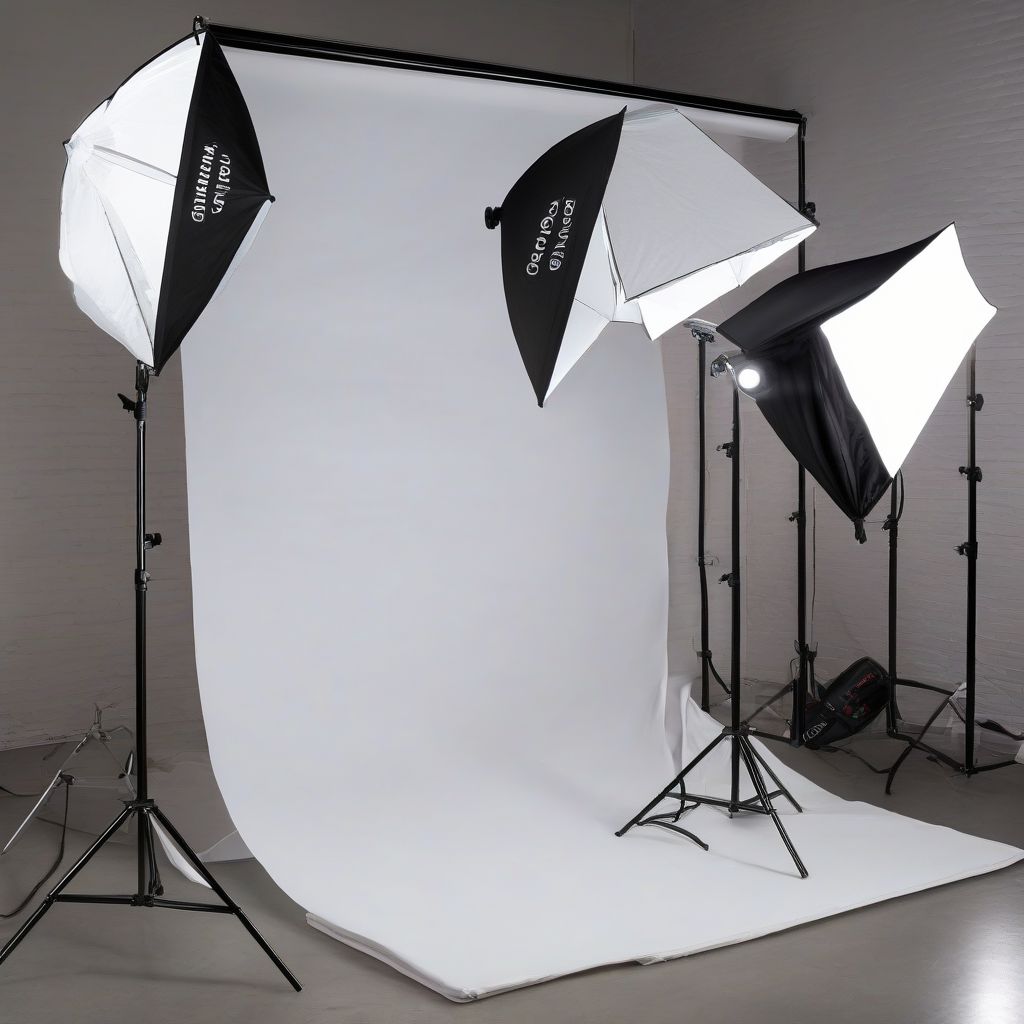Have you ever looked at a stunning photograph and wondered, “How did they get the lighting so perfect?” The answer, more often than not, lies in the right lighting equipment. Whether you’re a budding photographer or looking to up your game, understanding lighting equipment is crucial for capturing breathtaking images. This comprehensive guide will illuminate the path to choosing the perfect lighting gear for your photography journey.
Understanding the Basics of Photography Lighting
Before diving into the specifics of lighting equipment, it’s essential to grasp the fundamentals of light and how it interacts with your subject.
Natural Light vs. Artificial Light
Natural light, as the name suggests, comes from the sun. It’s free, abundant, and constantly changing throughout the day. Photographers often favor the “golden hour” – the hour after sunrise and the hour before sunset – for its warm, diffused light.
Artificial light, on the other hand, encompasses any light source that isn’t the sun. This includes studio strobes, speedlights, continuous lights, and even household lamps. Artificial light offers greater control, allowing you to manipulate the intensity, direction, and color of light.
Qualities of Light
Intensity: Refers to the brightness of light. A brighter light source will illuminate your subject more intensely.
Direction: Impacts how shadows fall on your subject, influencing the mood and dimension of your photograph.
Color Temperature: Measured in Kelvin (K), it determines the warmth or coolness of light. Lower Kelvin temperatures produce warmer light (orange/yellow), while higher temperatures create cooler light (blue).
Types of Photography Lighting Equipment
Now, let’s explore the different types of lighting equipment available:
1. Continuous Lighting
As the name implies, continuous lights provide constant illumination, allowing you to see how the light falls on your subject in real time.
a) LED Lights: Energy-efficient and long-lasting, LED lights are popular for their versatility. They come in various shapes and sizes, making them suitable for everything from product photography to vlogging.
b) Fluorescent Lights: Known for their soft, diffused light, fluorescent lights are often used in portrait and product photography. However, they tend to be less powerful than other options.
Pros of Continuous Lighting:
- Easy to use: Perfect for beginners as you see the lighting effect immediately.
- Affordable: Generally less expensive than strobes.
- Great for video: Provide constant illumination for video recording.
Cons of Continuous Lighting:
- Less Powerful: Not ideal for freezing motion or shooting in bright conditions.
- Heat Generation: Some continuous lights can get hot, especially at higher intensities.
2. Studio Strobes (Flash)
Studio strobes are powerful flashes that deliver a burst of light, ideal for freezing motion and overpowering ambient light.
a) Monolights: All-in-one units with the flash tube and power pack combined, making them portable and easy to set up.
b) Pack and Head Systems: Offer greater power and flexibility, with a separate power pack connected to one or more flash heads.
Pros of Studio Strobes:
- High Power: Ideal for freezing motion, shooting with large apertures, and overpowering ambient light.
- Precise Control: Offer fine-tuned adjustments for intensity and duration of light.
- Variety of Modifiers: Compatible with a wide range of light modifiers to shape and control light.
Cons of Studio Strobes:
- Higher Cost: More expensive than continuous lighting options.
- Steeper Learning Curve: May require some practice to master.
- Not Ideal for Video: Only provide a burst of light.
3. Speedlights (External Flash)
Speedlights are compact, portable flashes that mount onto your camera’s hot shoe. They are versatile tools for both on-camera and off-camera flash photography.
Pros of Speedlights:
- Portability: Small and lightweight, making them perfect for on-the-go photography.
- Versatility: Can be used on or off-camera, offering flexibility in lighting setups.
- Affordable: More budget-friendly compared to studio strobes.
Cons of Speedlights:
- Less Powerful: Not as powerful as studio strobes.
- Limited Modifiers: Fewer modifier options compared to studio strobes.
Essential Lighting Modifiers
Light modifiers are tools used to shape and control the light from your source. They are crucial for creating the desired mood, softening shadows, and directing light precisely.
- Softboxes: Diffuse light, creating a soft, even illumination.
- Umbrellas: Offer a wider spread of light, ideal for larger areas or groups.
- Beauty Dishes: Produce a focused, yet soft light, often used for portraits.
- Honeycombs: Create a directional beam of light, highlighting specific areas.
- Snoots: Narrow the beam of light, producing a spotlight effect.
 Photography Lighting Equipment
Photography Lighting Equipment
Factors to Consider When Choosing Lighting Equipment
With the vast array of options available, choosing the right lighting equipment can feel overwhelming. Consider these factors to narrow down your choices:
- Type of Photography: The genre you specialize in, be it portraits, landscapes, products, or events, will significantly influence your lighting needs.
- Budget: Set a realistic budget to determine what you can afford.
- Skill Level: Beginners might prefer continuous lighting or speedlights, while more experienced photographers might opt for studio strobes.
- Portability: Consider how often you’ll be shooting on location versus in a studio.
- Desired Effects: Envision the lighting effects you want to achieve and choose modifiers accordingly.
Conclusion
Mastering photography lighting is an ongoing journey of experimentation and creativity. By understanding the different types of lighting equipment, their pros and cons, and essential modifiers, you can make informed decisions to elevate your photography.
Remember, the “best” lighting equipment ultimately depends on your individual needs, shooting style, and the story you want to tell through your images. So, embrace the world of lighting, experiment with different setups, and watch your photographic vision shine bright.


